Looking back 10 years to 2010, the economy was depressed. A January 2010 article in Logistics Management surveyed spending, with 69% of the responders claiming their indication of ‘no spending on new technology’. Companies that were optimistic in spending, solely focused on adding equipment, IT and barcoding. The main theme in the Material Handling industry at the time was to “lean it out” – make current operations work more effectively without CapEx spending.
We’ve come a long way in 10 years — more than 80% of the responders in the January 2020 issue of Logistics Management indicated intent to spend this year. Specifically, robotics, AMRs (automated mobile robots) and data analytics are now key reasons to spend. A clear evolution on more affordable information in the workplace has driven Manufacturing Execution Systems, Warehouse Execution Systems and enhanced Warehouse Management Systems to a much higher level than anticipated 10 years ago.
It’s hard to look 10 years out and say what the Material Handling world is going to look like in 2030. But there are some clear trends that will drive the early part of the next decade.
- We are Now in a Solutions-based World. As companies continue to grow, and human capital becomes more and more challenging to find, companies will seek total solutions to solve issues, and not so much just adding pieces of equipment.
- Information is King. Supply chains generate tons of data and advances in analytics are making it easier for companies big and small to harness the power of information to transform their systems and processes. This will drive the real resurgence of KPI’s, improved inventory control and better labor management.
- The Robotics Market will Grow Rapidly. Currently, robots reside in only 6% of all Distribution Centers. There is a huge untapped market to expand into operations that don’t currently use robots, and expand those that employ a limited number of robots.
- Labor Shortages will be a Key Driver to Increase Automation. An overall shortage of labor across the US, driven by economic growth and immigration prevention policies, will play out in a much heavier role over the next few years. Warehousing labor will be especially hit hard, wages will continue to rise in order to find good workers in an already tight market.
- Business Climate and Policies will be Integrated Heavily with Political Activity. Over the past two years, trade agreements, tax policies, trade wars and capital gains have attempted to keep the US economy moving upward. It has driven up the US deficit to record levels which will need to be paid off at some point. Politics will continue to play a much stronger role in whether we continue to erode our manufacturing base in all technologies including automotive.
At Boston Industrial Consulting, we continue to watch the market, follow these trends, and are well positioned to help our clients meet the demands and challenges they face over the next decade.

